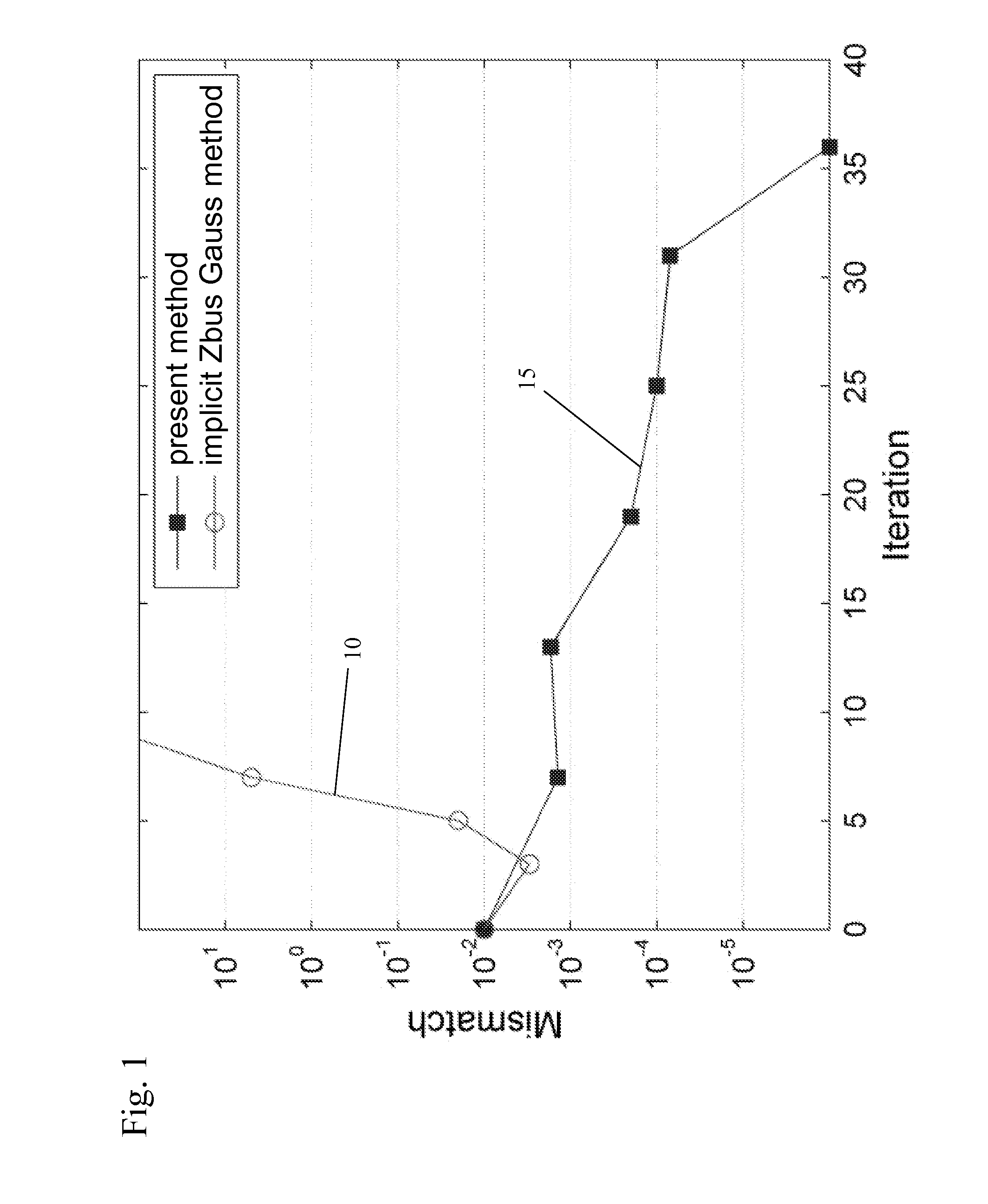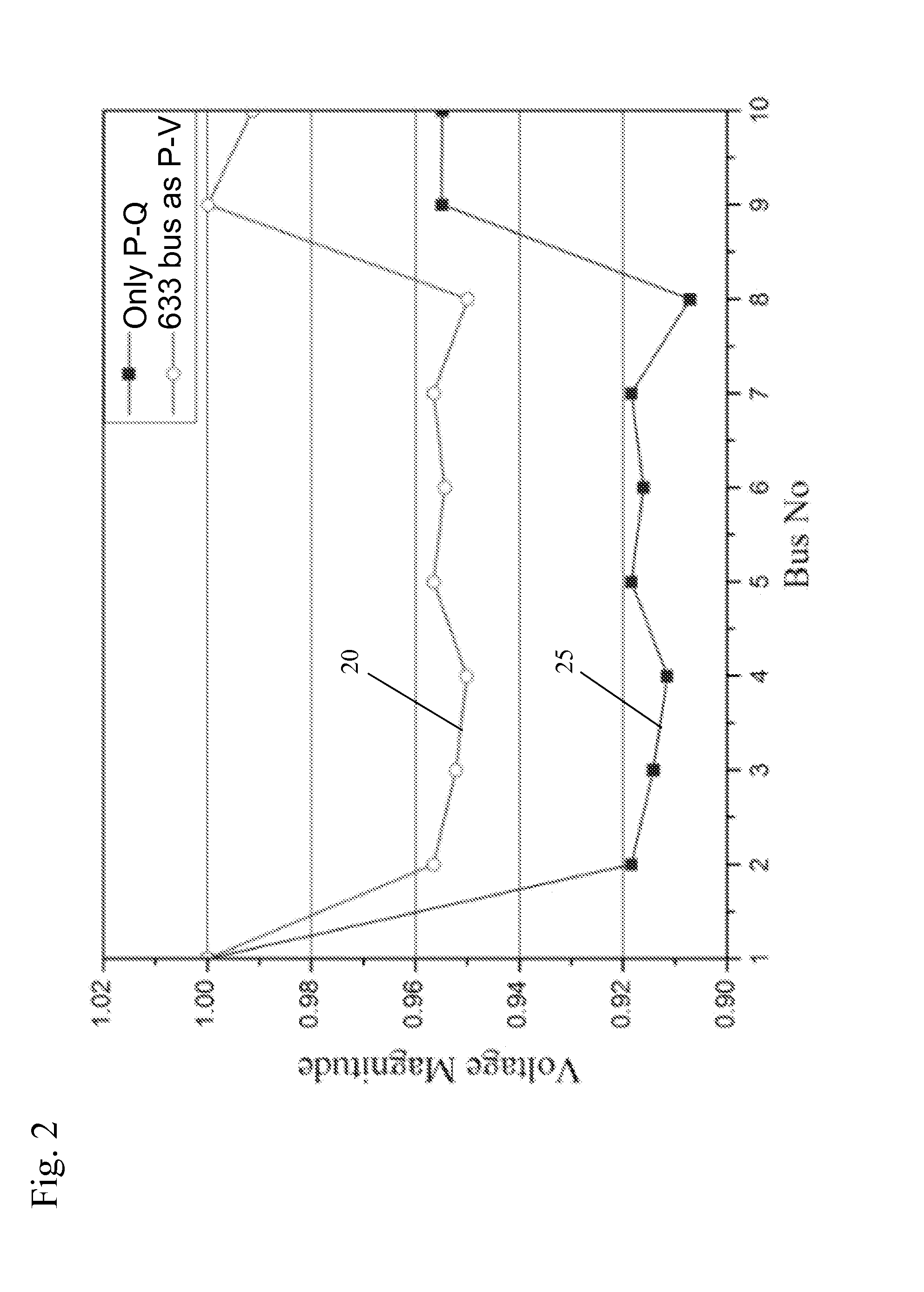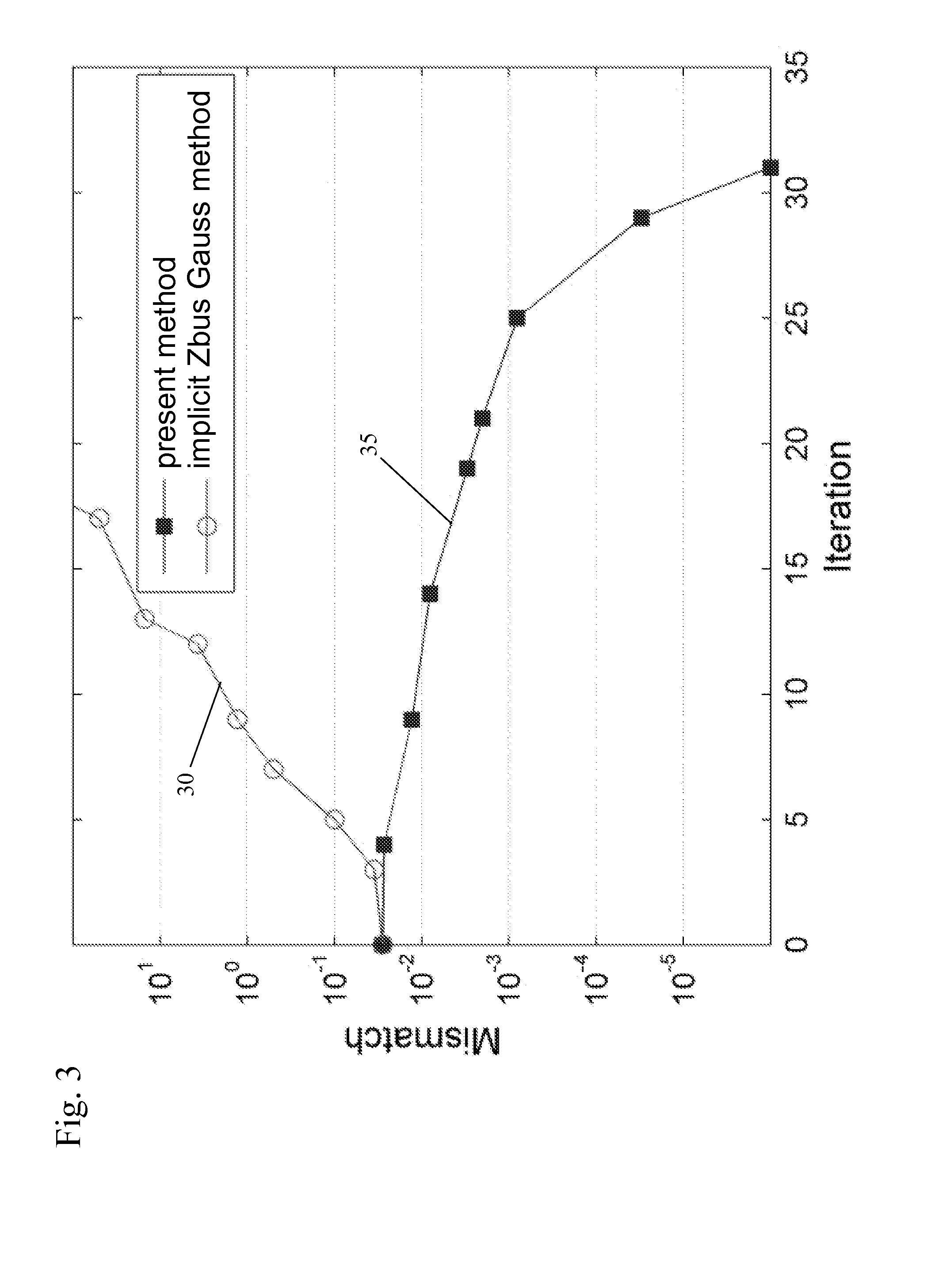Robust Power Flow Methodologies for Distribution Networks with Distributed Generators
a distributed generator and distribution network technology, applied in the field of large-scale, unbalanced, power distribution network, can solve the problems of power flow convergence in power flow studies, reverse power flow, and impose significant changes in operating conditions by adding dgs to distribution network
- Summary
- Abstract
- Description
- Claims
- Application Information
AI Technical Summary
Benefits of technology
Problems solved by technology
Method used
Image
Examples
case 1
[0099]One DG is connected to node #m1069148 of the 8500-bus and this node is modeled as a P-V node. The prior art implicit Z-bus Gauss method fails on this test system, while the present three-stage method succeeds in obtaining a power flow solution.
case 2
Gs
[0100]Five DGs are connected to the 8500-node industrial distribution system. The specified positive sequence voltages at these nodes are 1.0 p.u. The present three-stage method succeeds in obtaining a power flow solution as shown in Table 3.
TABLE 3Power Flow Solution of 8500-node net with Five DGsVoltage (p.u.)Reactive Power (kVar)PV IDABCABCM1069148——1.0000——1667.04M1008753—1.0000——2609.53—L28031990.99990.99990.99993290.352421.722070.18L3141390—1.0000——2.53—M11428751.00001.00001.00002820.091247.971528.96
case 3
s
[0101]Ten DGs are connected to the 8500-node industrial distribution system. The specified positive sequence voltages at these nodes are 1.0 p.u. The present three-stage method succeeds in obtaining a power flow solution as shown in Table 4. A comparison of the voltage profiles of Phase A of the IEEE 8500-node System with the P-Q model 60 and with the P-V model 65 of ten nodes in the system is shown in FIG. 6.
TABLE 4Power Flow Solution of 8500-node net with Ten DGsVoltage (p.u.)Reactive Power (kVar)PV IDABCABCM1069148——1.0000——1678.77M1008753—1.0000——2627.31—L28031991.00001.00001.0000451.72761.19 599.50L3141390—1.0000——3.27—M11428751.00001.00001.0000734.22−165.58 291.51M10474231.0000——1536.42——L2879089——1.0000——1054.83M10477501.0000——637.03——L31017881.0000——864.15——L30853980.99990.99990.99991821.293043.861756.71
Homotopy-Enhanced Newton's Method
[0102]In some embodiments, a homotopy-enhanced Newton's method is used when Newton's method is used as the corrector in the homotopy procedu...
PUM
 Login to View More
Login to View More Abstract
Description
Claims
Application Information
 Login to View More
Login to View More - R&D
- Intellectual Property
- Life Sciences
- Materials
- Tech Scout
- Unparalleled Data Quality
- Higher Quality Content
- 60% Fewer Hallucinations
Browse by: Latest US Patents, China's latest patents, Technical Efficacy Thesaurus, Application Domain, Technology Topic, Popular Technical Reports.
© 2025 PatSnap. All rights reserved.Legal|Privacy policy|Modern Slavery Act Transparency Statement|Sitemap|About US| Contact US: help@patsnap.com



